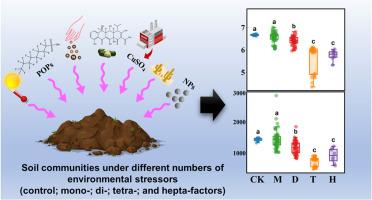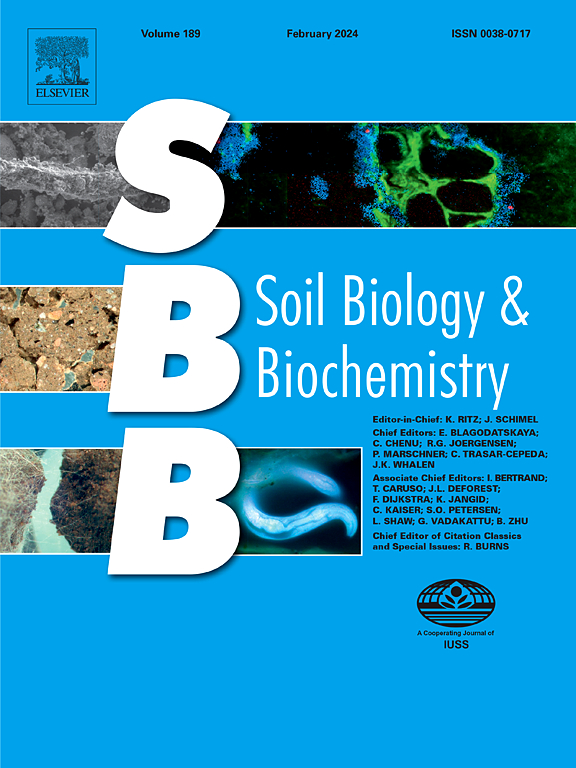Microbial communities in many ecosystems are suffering a wide range of environmental stressors induced by anthropogenic perturbations. While the impacts of a single stressor have been extensively estimated in numerous studies, the responses of microbial communities to multiple environmental stressors simultaneously are still poorly understood. In the current study, we investigated the taxonomic diversity, community resistance, and co-occurrence interaction of soil bacterial communities treated with different numbers of environmental stressors by conducting 136 microcosms. We found that the richness and Shannon diversity of the soil community decreased significantly from 1430 to 6.54 in the mono-factor treatments to 920 and 5.77 in the hepta-factor treatments. The counts of nodes and edges of the soil microbial networks decreased with the increasing stressor number, potentially indicating that multiple stressors can reduce the network size. Multiple stressors increased the community resistance potential to environmental disturbance. Additionally, the network cohesion suggested that the cooperative and competitive behaviors between microorganisms were induced by multiple stressors. The observation could be potentially due to the enrichment of the generalists by multiple environmental stressors. Although only a handful of stressors were included, our study still indicated that multiple environmental stressors would lead to diversity loss via deterministic processes.



